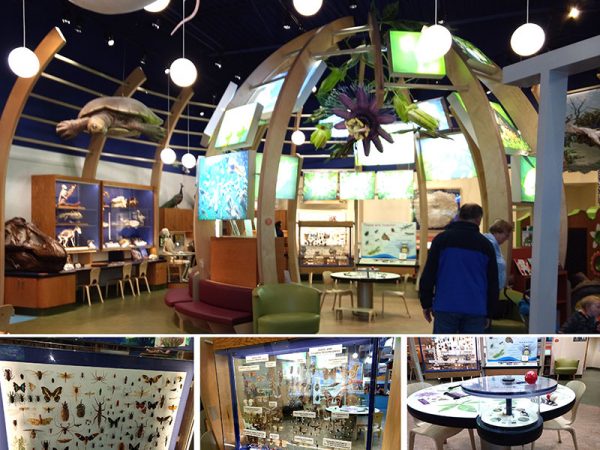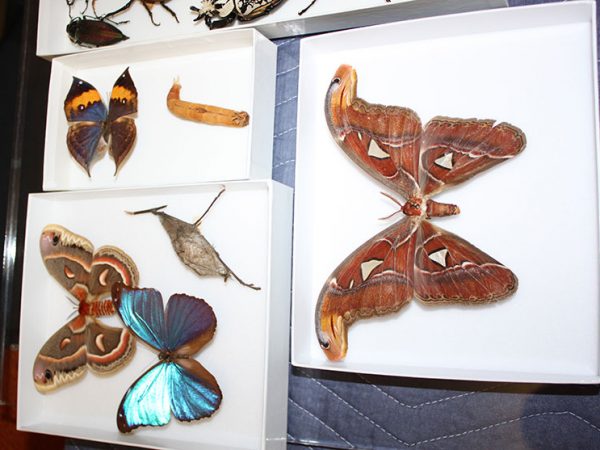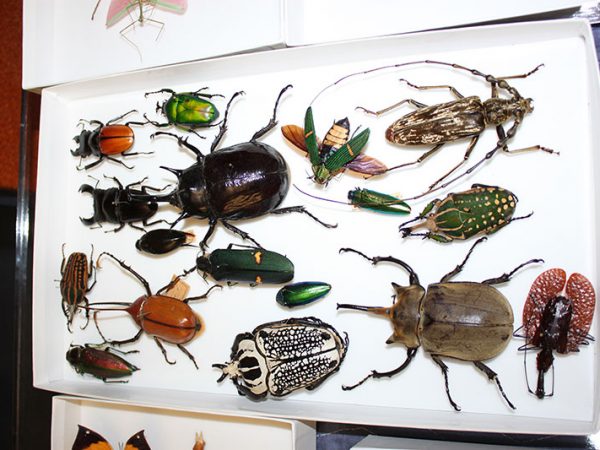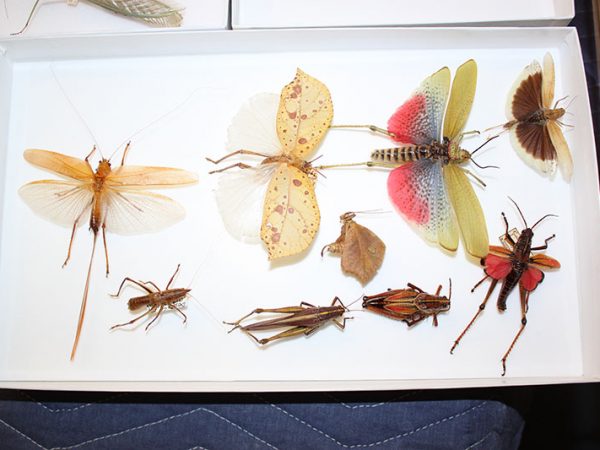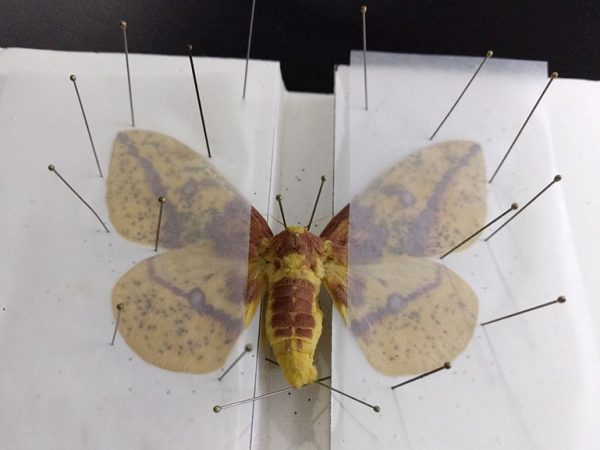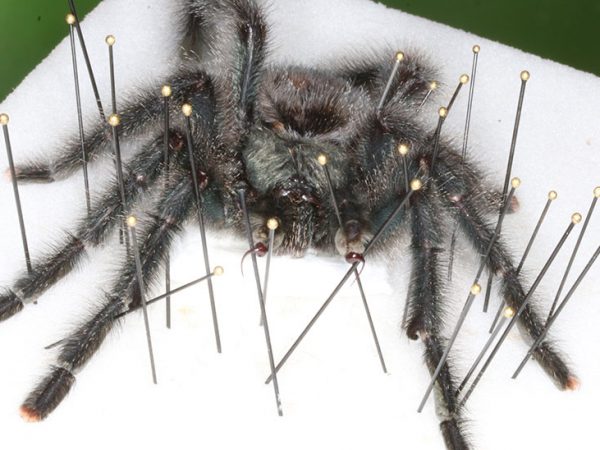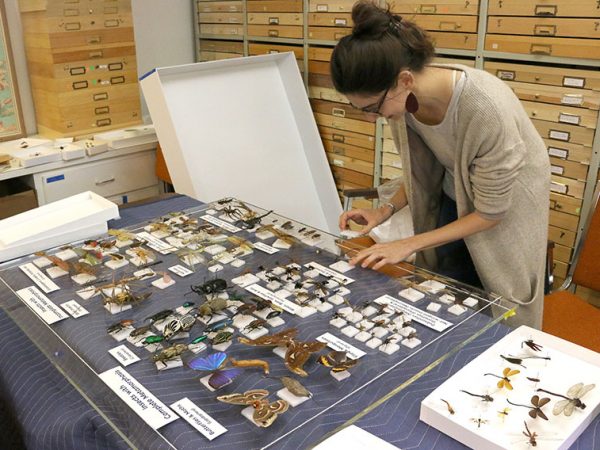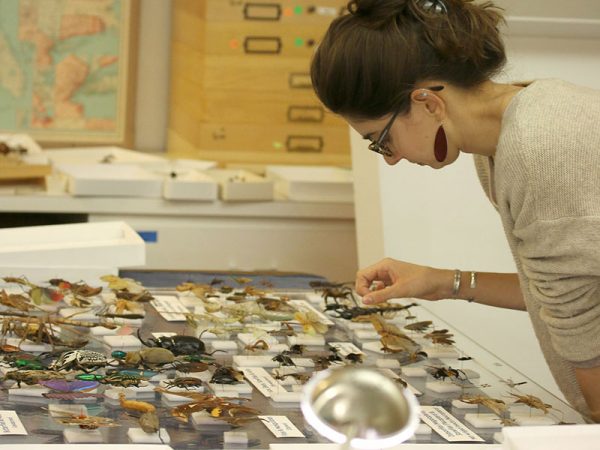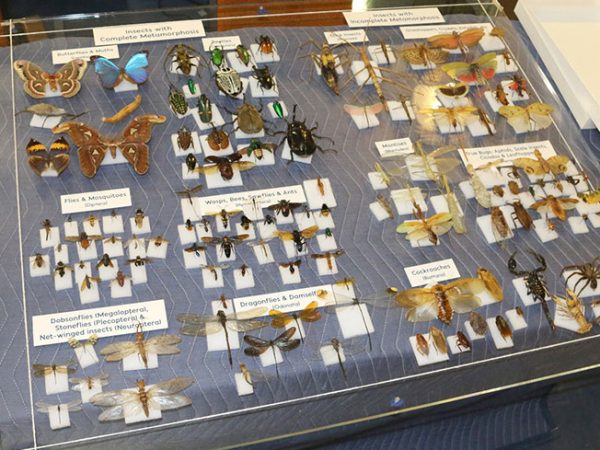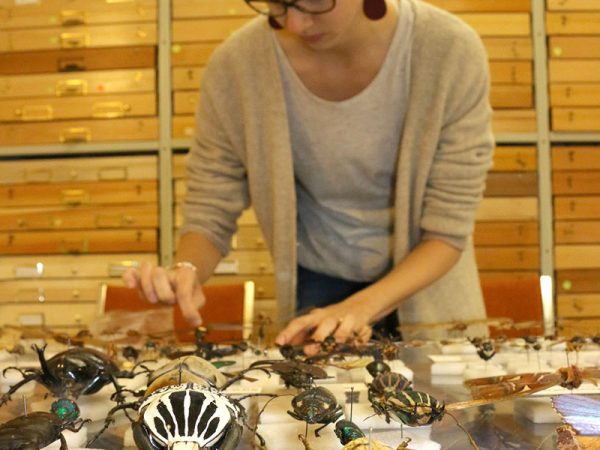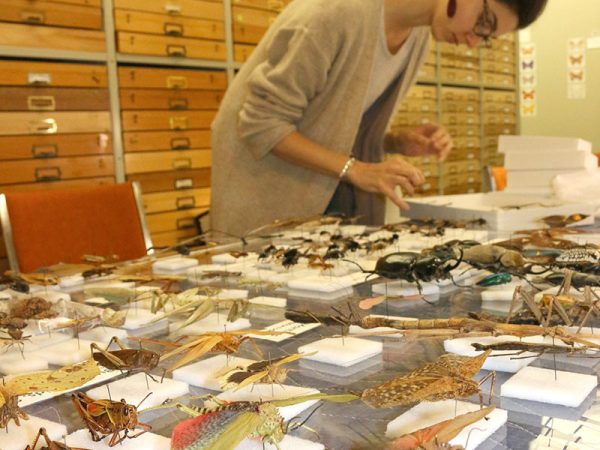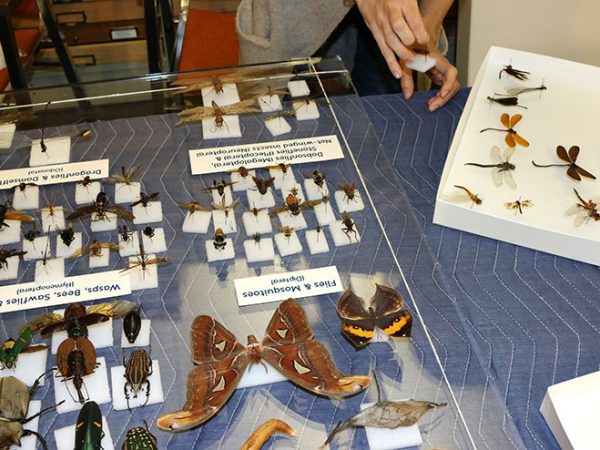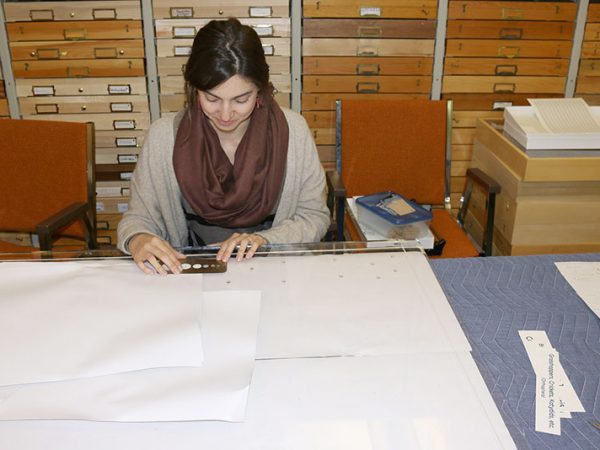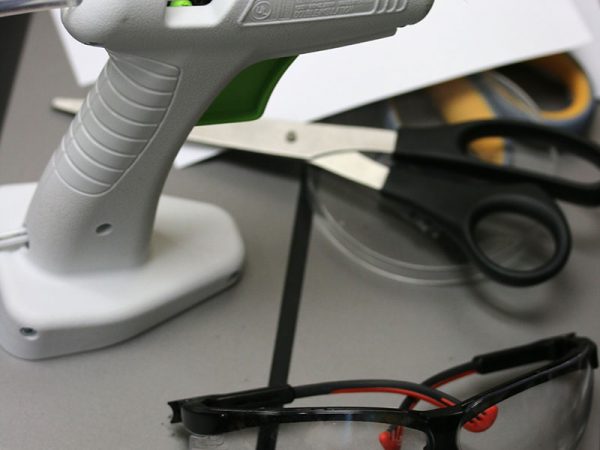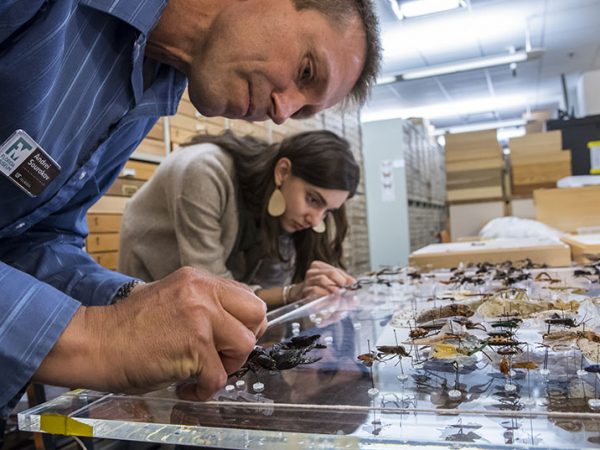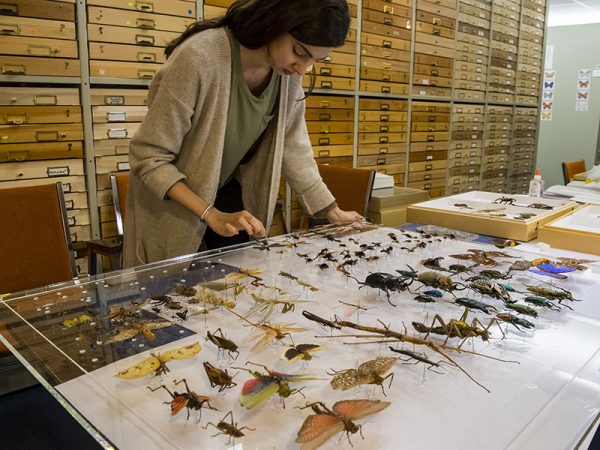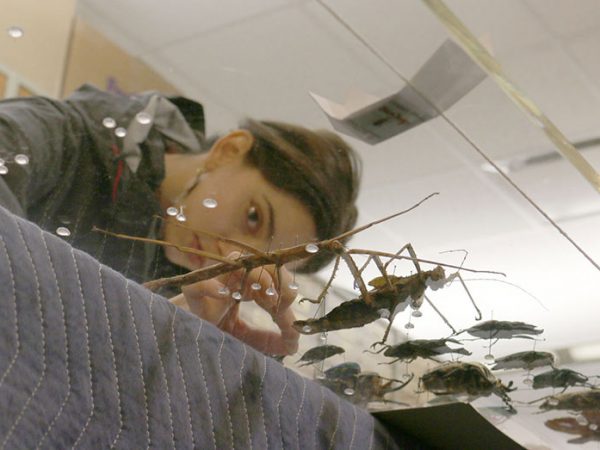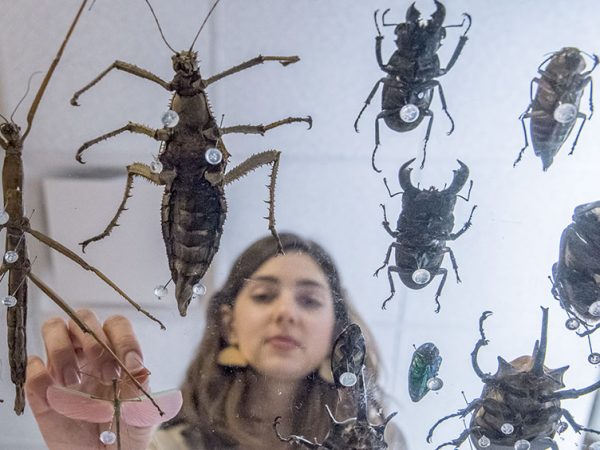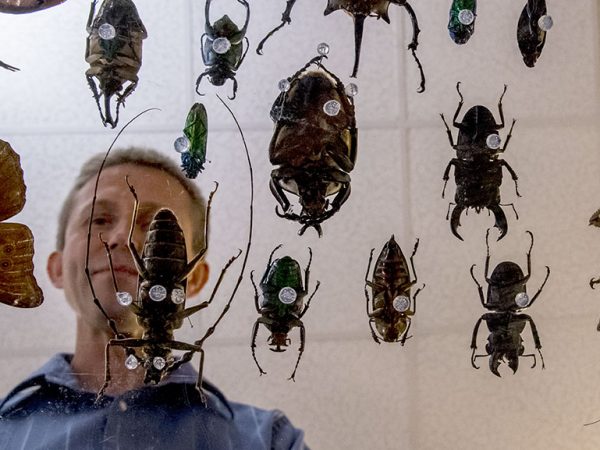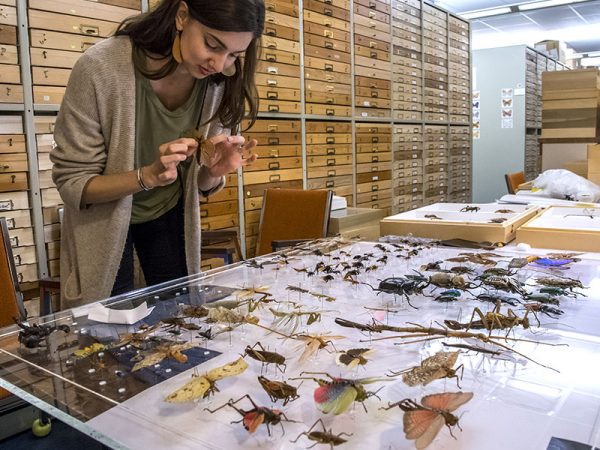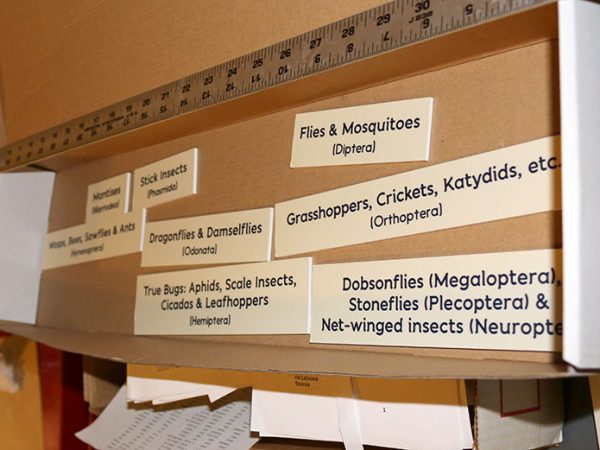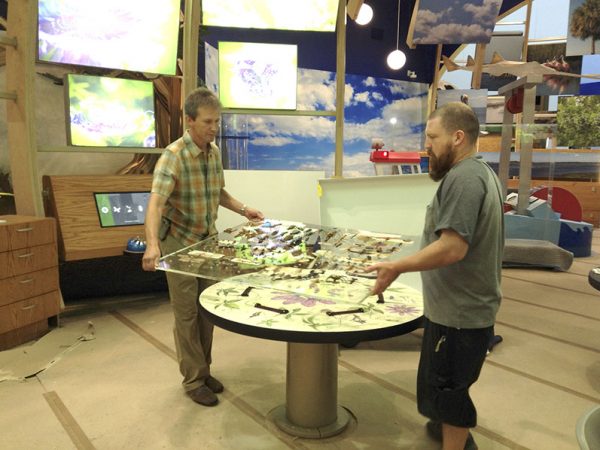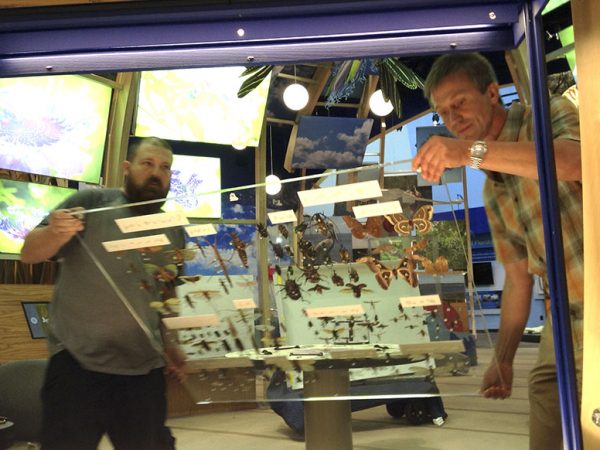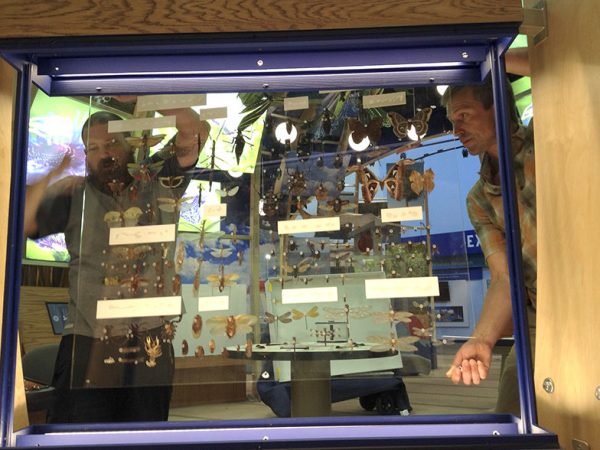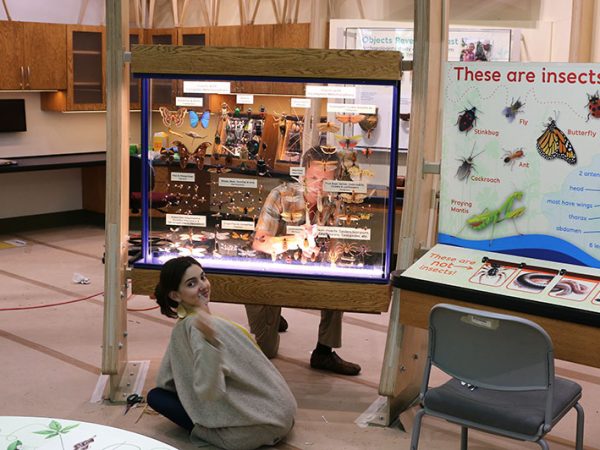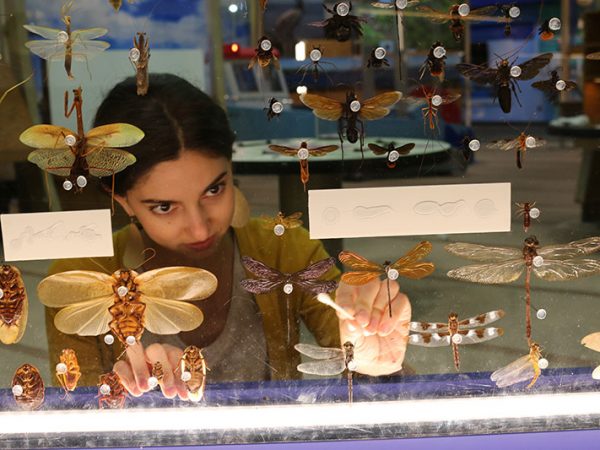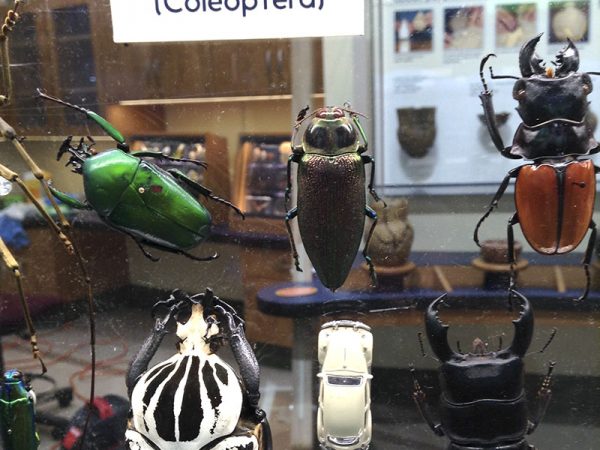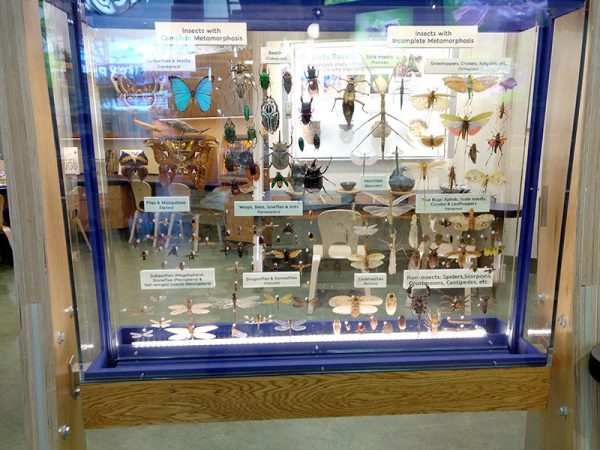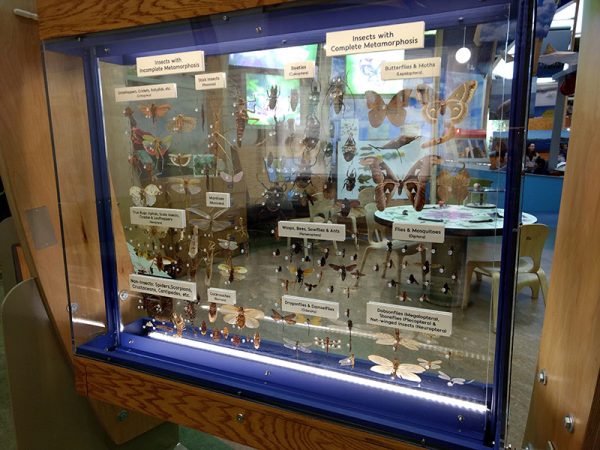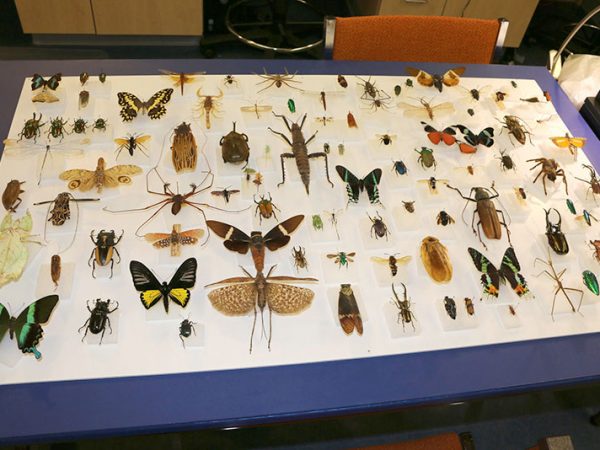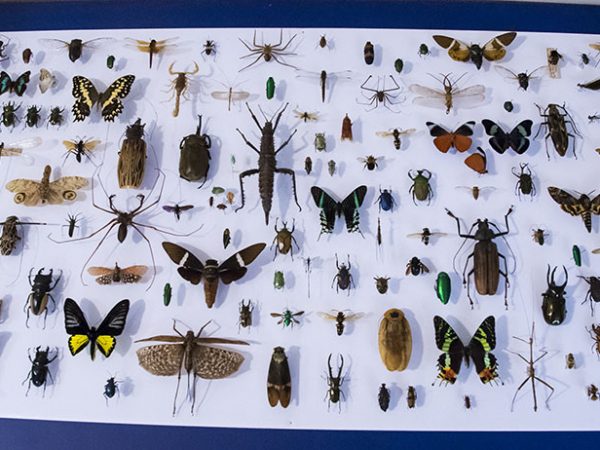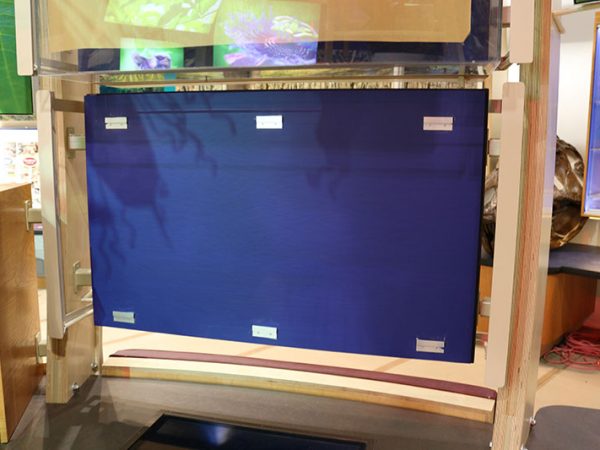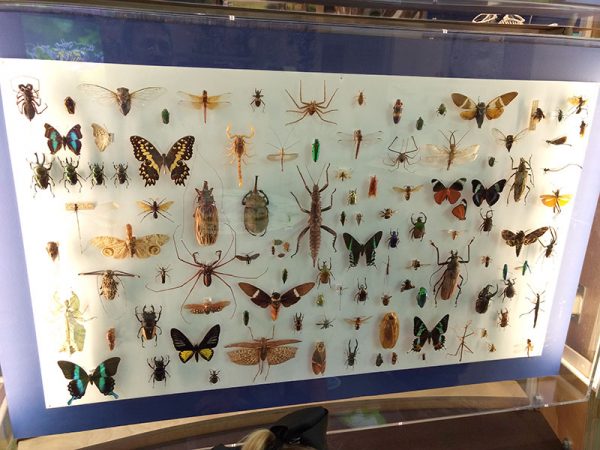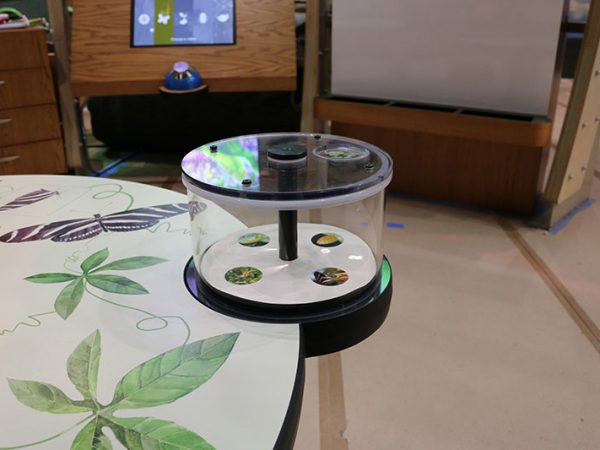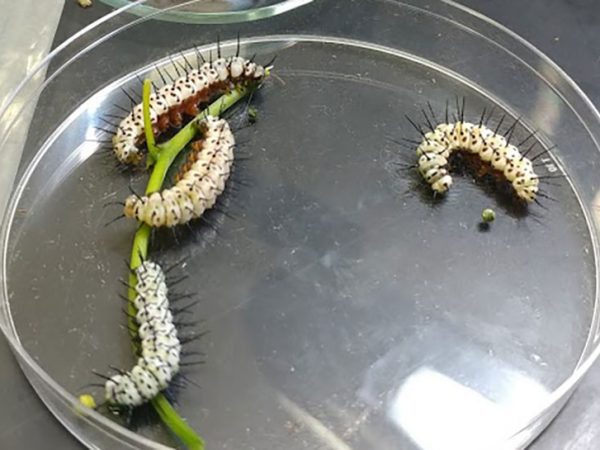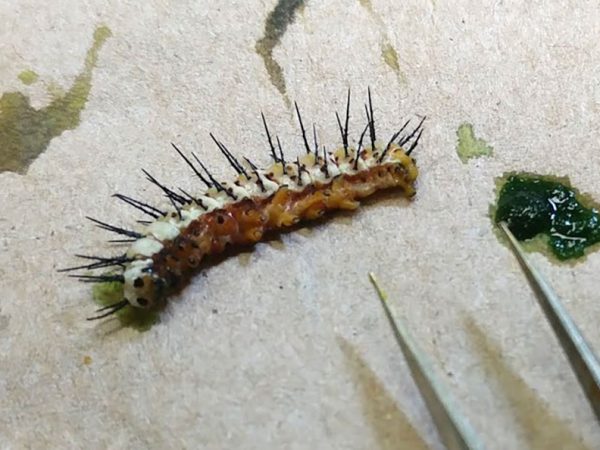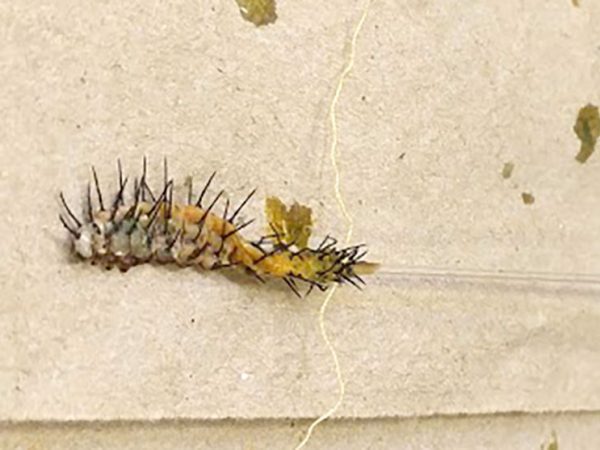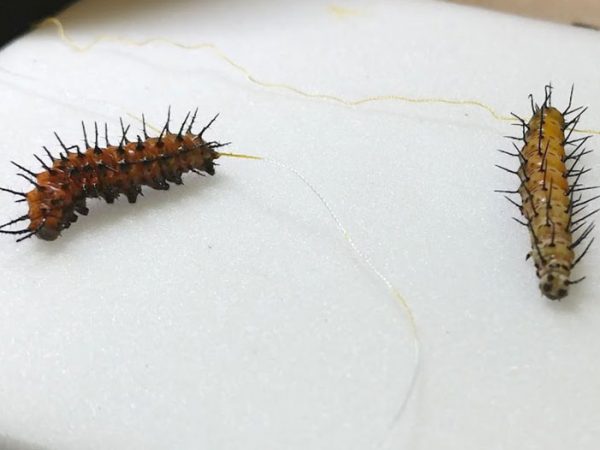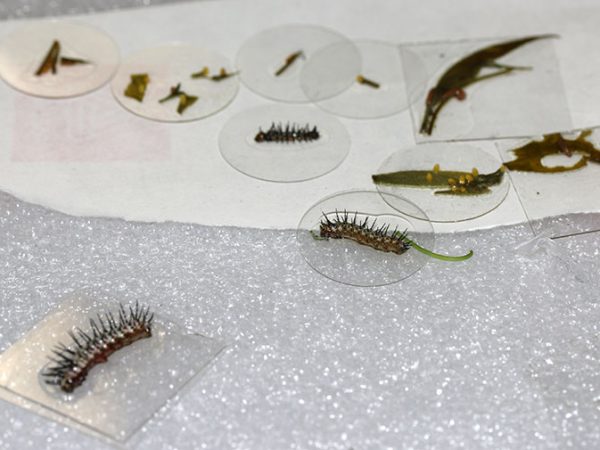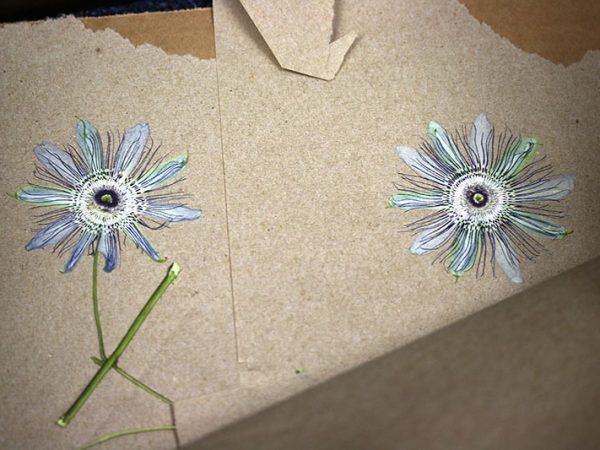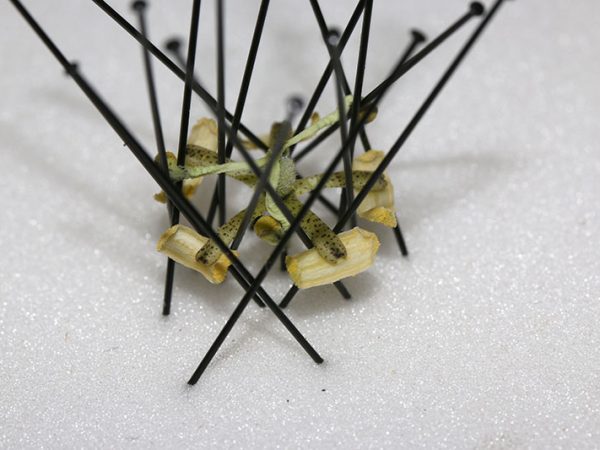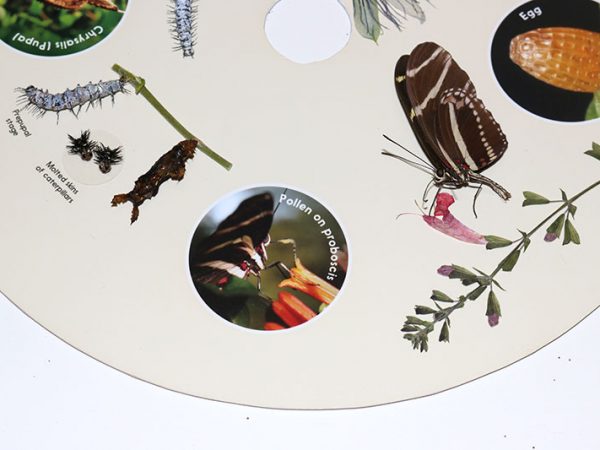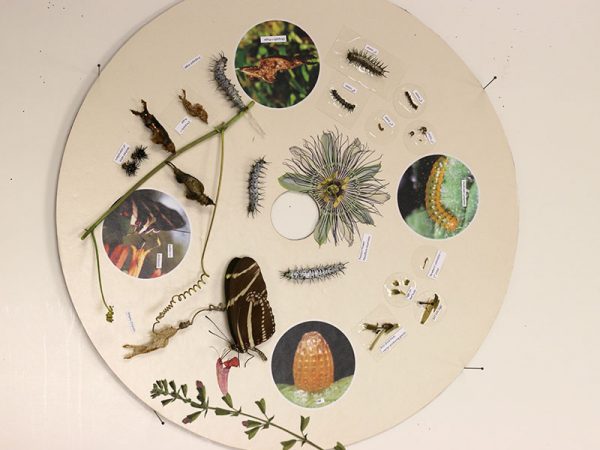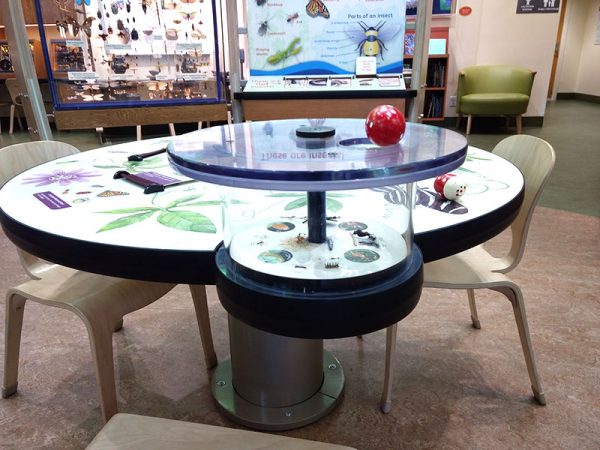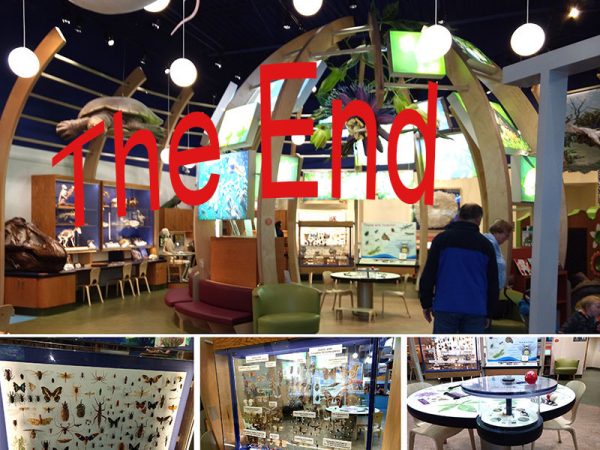In 2017, we were asked to make three insect cases for the new Discovery Zone exhibit at the Florida Museum of Natural History:
 The finished cases in the exhibit.
The finished cases in the exhibit. First, we selected the insects.
First, we selected the insects. Beetles were our favorites, …
Beetles were our favorites, … … but we did not forget other orders.
… but we did not forget other orders. When preparation was needed …
When preparation was needed … … preparation was done.
… preparation was done. Next came the layout.
Next came the layout. We arranged insects in two large groups:
We arranged insects in two large groups: … with complete and incomplete metamorphosis.
… with complete and incomplete metamorphosis. Because insects were to be seen from both sides…
Because insects were to be seen from both sides… … they had to be mounted on the plexiglass.
… they had to be mounted on the plexiglass. So, first, we placed them on pieces of foam, …
So, first, we placed them on pieces of foam, … and then we put dots of hot glue on plexi, …
and then we put dots of hot glue on plexi, … …(which, BTW, is a real pain) …
…(which, BTW, is a real pain) … … exactly where the pin would go.
… exactly where the pin would go. Each pin was dipped into glue …
Each pin was dipped into glue … … before we stuck it into the hot glue dot.
… before we stuck it into the hot glue dot. Sometimes several additional pins were needed …
Sometimes several additional pins were needed … … to keep a larger insect in place.
… to keep a larger insect in place. We wish that the labels were made ahead of time, …
We wish that the labels were made ahead of time, … … but they were not. Still, we managed to add them in.
… but they were not. Still, we managed to add them in. Then came the installation – a nerve wrecking exercise.
Then came the installation – a nerve wrecking exercise. It was fun and easy thanks to our fabrication experts.
It was fun and easy thanks to our fabrication experts. No insect specimens were broken during installation.
No insect specimens were broken during installation. For cleaning the plexi from debris before closing the case, …
For cleaning the plexi from debris before closing the case, … … we used professional tools (aka Q-tips).
… we used professional tools (aka Q-tips). We placed a toy VW beetle among the beetles :), …
We placed a toy VW beetle among the beetles :), … … closed the lid, and all that was left …
… closed the lid, and all that was left … … was adding labels on the back side of the case.
… was adding labels on the back side of the case. The 2nd case was to showcase the diversity and beauty of insects.
The 2nd case was to showcase the diversity and beauty of insects. Mounted specimens were pinned into foam-core board, ….
Mounted specimens were pinned into foam-core board, …. … z-mounted into the case, …
… z-mounted into the case, … … and protected with the plexiglass lid.
… and protected with the plexiglass lid. This small round case was to show life history …
This small round case was to show life history … … of the zebra longwing butterfly from egg to adult.
… of the zebra longwing butterfly from egg to adult. We used a 19th century technique of…
We used a 19th century technique of… … inflating caterpillars with air like a balloon.
… inflating caterpillars with air like a balloon. They were tied at the end with a string once inflated, and dried.
They were tied at the end with a string once inflated, and dried. A bit of acrylic paint returned them their white color.
A bit of acrylic paint returned them their white color. Passion vine flowers were pressed in a phone book, …
Passion vine flowers were pressed in a phone book, … but their reproductive organs were a bit more challenging.
but their reproductive organs were a bit more challenging. When finally all pieces of this puzzle were in place, …
When finally all pieces of this puzzle were in place, … … they were added together to illustrate the life cycle, …
… they were added together to illustrate the life cycle, … …. which one can see through a magnifying glass.
…. which one can see through a magnifying glass. The end!
The end!
